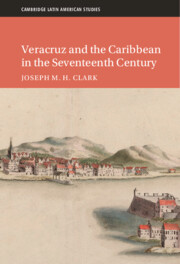Book contents
- Veracruz and the Caribbean in the Seventeenth Century
- CAMBRIDGE LATIN AMERICAN STUDIES
- Veracruz and the Caribbean in the Seventeenth Century
- Copyright page
- Dedication
- Contents
- Figures
- Maps
- Tables
- Acknowledgments
- Note on the Text
- Abbreviations
- Maps
- Introduction
- Part I Building the Mexican-Caribbean World
- 1 Veracruz Before the Caribbean
- 2 Environment, Health, and Race, 1599–1697
- 3 Imperial Designs and Regional Systems
- 4 The Large and Small-Scale Introduction of Africans to Veracruz
- Part II The Caribbean in Veracruz
- Appendices
- Bibliography
- Index
- Cambridge Latin American Studies
2 - Environment, Health, and Race, 1599–1697
from Part I - Building the Mexican-Caribbean World
Published online by Cambridge University Press: 19 January 2023
- Veracruz and the Caribbean in the Seventeenth Century
- CAMBRIDGE LATIN AMERICAN STUDIES
- Veracruz and the Caribbean in the Seventeenth Century
- Copyright page
- Dedication
- Contents
- Figures
- Maps
- Tables
- Acknowledgments
- Note on the Text
- Abbreviations
- Maps
- Introduction
- Part I Building the Mexican-Caribbean World
- 1 Veracruz Before the Caribbean
- 2 Environment, Health, and Race, 1599–1697
- 3 Imperial Designs and Regional Systems
- 4 The Large and Small-Scale Introduction of Africans to Veracruz
- Part II The Caribbean in Veracruz
- Appendices
- Bibliography
- Index
- Cambridge Latin American Studies
Summary
Chapter 2 examines the environmental consequences of Veracruz’s 1599 relocation, drawing on hospital records, cabildo reports, and published traveler accounts. When Veracruz resettled at Ulúa, it was subject to many of the dangers the cabildo warned about in the sixteenth century: more mosquitoes, less arable land, and no stable supply of drinking water. These factors contributed to Veracruz’s reputation as an impoverished, insalubrious, and unwelcoming place. Such descriptions have inevitably contributed to the historical labeling of Veracruz as a “backwater,” but they also represent the deliberate efforts of early modern writers to spatially classify Veracruz as a part of the Caribbean world. In particular, white male European writers explicitly linked Veracruz’s ostensibly “poor” environment to its large African population, suggesting the city’s climate was suited for Africans, but not Europeans or indigenous people. By linking Veracruz’s climate with the skin color of its residents—even by means of a negative trope—European writers defined the city into a discrete environmental and phenotypical space distinct from both Europe and other parts of the Americas.
- Type
- Chapter
- Information
- Veracruz and the Caribbean in the Seventeenth Century , pp. 49 - 73Publisher: Cambridge University PressPrint publication year: 2023

